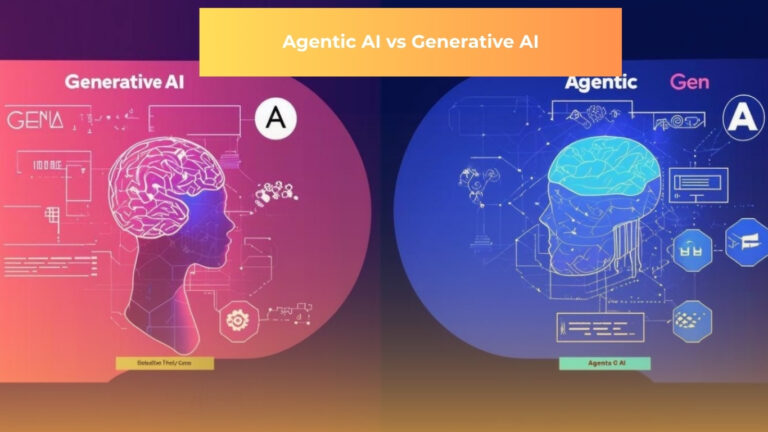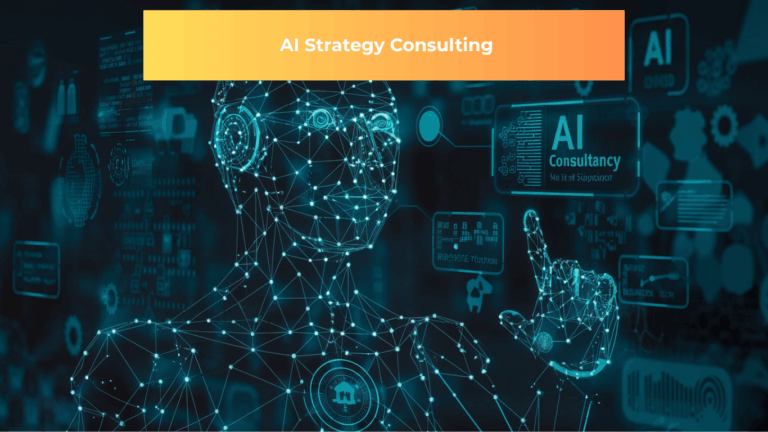By 2030, the Artificial intelligence customer service market will explode to $47.82 billion—a 296% increase from 2024—as businesses discover that intelligent automation doesn’t replace human connection, it amplifies it.
Quick Answer:
Artificial intelligence customer service uses machine learning, natural language processing, and predictive analytics to automate support interactions, assist human agents, and deliver personalized customer experiences at scale. Implementation delivers measurable results: businesses achieve 30% cost reduction, 45% faster resolution times, and $3.50 ROI for every dollar invested. Success requires three pillars: robust technical architecture (NLP engine, dialogue manager, ML models, knowledge base), strategic human-AI collaboration design, and continuous optimization based on performance data and customer feedback.
What is Artificial Intelligence Customer Service?
Artificial intelligence customer service refers to the strategic use of AI technologies—including machine learning algorithms, natural language processing, chatbots, virtual assistants, and predictive analytics—to automate, enhance, and personalize customer support interactions across all touchpoints. Rather than replacing human agents, AI systems augment human capabilities by handling routine inquiries, providing real-time guidance to agents, and enabling 24/7 support availability.
At its core, an artificial intelligence customer service bot functions as an intelligent conversational agent that understands customer intent, processes natural language inputs, retrieves relevant information from knowledge bases, and generates contextually appropriate responses. These systems have evolved far beyond simple rule-based chatbots to become sophisticated AI agents capable of managing complex, multi-turn conversations and resolving issues end-to-end.
Artificial intelligence customer service is surging. Nearly 80% of companies use or plan to use AI chatbots by 2025, and up to 95% of interactions are projected to involve AI—evidence that artificial intelligence customer service directly tackles instant‑support expectations, rising volumes, agent burnout, and cost pressure.
Artificial intelligence customer service works end‑to‑end. AI chatbots deliver instant first‑line support and can deflect up to 80% of routine queries, while agent‑assist in artificial intelligence customer service surfaces the right knowledge and response suggestions so humans resolve complex issues faster.
Artificial intelligence customer service is proactive. Predictive analytics anticipates needs before they escalate, and sentiment analysis flags frustrated customers for skilled routing—together, artificial intelligence customer service turns reactive firefighting into preventive care.
Artificial intelligence customer service is a growth engine. With integrated automation, triage, and intelligent routing, artificial intelligence customer service shifts support from a cost center to a strategic differentiator that strengthens loyalty and accelerates revenue.
How Artificial Intelligence is Used in Customer Service
Understanding how is artificial intelligence used in customer service requires examining both the technical mechanisms and practical applications that power modern support operations. The implementation of AI spans three primary layers: customer-facing automation, agent augmentation, and operational intelligence.
Core AI Technologies Powering Customer Service
Natural Language Processing (NLP) enables AI systems to understand human language in all its complexity—including intent, context, sentiment, and nuance. NLP breaks down customer messages into semantic components, identifies the underlying question or request, and maps it to appropriate responses or actions. Advanced NLP models like BERT (Bidirectional Encoder Representations from Transformers) have demonstrated significant improvements in understanding conversational context, enabling chatbots to maintain coherent multi-turn dialogues.
Machine Learning (ML) algorithms allow AI systems to continuously improve through experience. Every customer interaction provides training data that refines the system’s accuracy. Supervised learning helps chatbots recognize patterns in resolved tickets to suggest similar solutions. Reinforcement learning enables AI agents to optimize their response strategies based on customer satisfaction outcomes. This self-improving capability means Artificial intelligence customer service systems become more effective over time without manual retraining.

Predictive Analytics analyzes historical data, customer behavior patterns, and contextual signals to anticipate needs and issues. AI can predict which customers are at risk of churning, when equipment might fail requiring service, or what products a customer might need based on their purchase history. This proactive capability transforms reactive support into anticipatory service.
Practical AI Applications in Customer Service
AI Chatbots and Virtual Assistants serve as the first point of contact for customer inquiries across websites, mobile apps, messaging platforms, and voice channels. These conversational agents handle tasks ranging from answering FAQs and tracking orders to processing returns and scheduling appointments. Top companies using AI achieve 10-second first response times, compared to 30+ minute waits for human agents. Companies like Unity deployed AI agents that deflected 8,000 tickets and generated $1.3 million in savings[web].
Intelligent Routing and Triage systems analyze incoming requests to determine urgency, required expertise, and optimal routing paths. AI evaluates customer sentiment, issue complexity, account value, and agent availability to match each inquiry with the best-suited resource. This ensures VIP customers reach specialized agents immediately while routine questions flow to self-service channels.
Agent Copilots and Real-Time Assistance provide human agents with AI-powered support during customer interactions. As agents converse with customers, AI systems analyze the discussion, search knowledge bases, and surface relevant articles or suggest response templates. The Zendesk agent copilot, for example, guides agents through every step of complex interactions with proactive recommendations[web]. This assistance is particularly valuable during agent onboarding, reducing training time and improving consistency.
Automated Workflow Orchestration streamlines backend processes through intelligent automation. AI can automatically categorize and tag tickets, update CRM records, generate case summaries, trigger follow-up actions, and route escalations—eliminating manual administrative work. 80% time savings in case summary creation have been reported with AI automation.
Quality Assurance and Performance Analytics leverage AI to review 100% of customer interactions across channels, languages, and agents. AI-powered QA identifies coaching opportunities, knowledge gaps, and process improvements at scale. Rentman achieved 93% CSAT scores while maintaining 60-70 minute response times by using AI-driven quality feedback loops[web].
Voice and Call Center AI transcribes calls in real-time, generates after-call summaries, scores interactions for quality, and provides voice-based authentication. AI voice assistants can handle routine phone inquiries, reducing call volumes and wait times. This integration of AI across voice channels addresses the fact that most customers still prefer phone support for complex issues.
Artificial Intelligence Customer Service Architecture
Successful Artificial intelligence customer service implementation requires understanding the five-layer technical architecture that powers intelligent support systems. This blueprint provides the foundation for building robust, scalable AI solutions.
Layer 1: User Interface and Channel Integration
The UI layer encompasses all customer touchpoints: web chat widgets, mobile app interfaces, messaging platforms (WhatsApp, Facebook Messenger, SMS), email, voice channels, and social media. This layer must provide seamless, consistent experiences regardless of channel. Integration requires APIs that connect AI systems to each platform’s native interface while maintaining conversation context as customers switch channels.
Layer 2: Natural Language Processing Engine
The NLP engine processes incoming customer messages through several stages. Tokenization breaks text into individual words or phrases. Intent recognition identifies what the customer wants to accomplish. Entity extraction pulls out specific data points (order numbers, dates, product names). Sentiment analysis gauges emotional tone. Context management maintains conversation history to understand multi-turn dialogues. Modern NLP engines leverage transformer-based models pre-trained on billions of conversations to achieve high accuracy out of the box.
Layer 3: Dialogue Management System
The dialogue manager orchestrates conversation flow, determining appropriate responses based on identified intent, extracted entities, conversation history, and business logic rules. This component decides when to ask clarifying questions, when to execute actions, when to provide information, and when to escalate to human agents. Advanced dialogue managers use reinforcement learning to optimize conversation strategies based on successful resolution patterns.
Layer 4: Machine Learning Models and Knowledge Base
This layer contains the intelligence that powers AI responses. The knowledge base stores information from help articles, documentation, resolved tickets, product data, and policy documents. ML models include classification models that categorize inquiries, recommendation engines that suggest solutions, and generative models that craft responses. Retrieval-Augmented Generation (RAG) combines these elements, allowing AI to search knowledge bases and generate contextually accurate answers rather than relying solely on pre-trained knowledge.
Layer 5: Backend Integration and Systems of Record
The backend layer connects AI to enterprise systems—CRM platforms (Salesforce, HubSpot), helpdesk software (Zendesk, ServiceNow), e-commerce platforms, billing systems, inventory databases, and more. These integrations enable AI to access customer data, retrieve order information, update ticket status, create service requests, and execute transactions. APIs and middleware facilitate data exchange while maintaining security and performance standards.
Technical Requirements for Successful Implementation
Organizations planning Artificial intelligence customer service deployments should ensure their technology stack supports:
- Scalable infrastructure capable of handling peak inquiry volumes
- Low-latency APIs that enable real-time responses (sub-second)
- Data pipelines for ingesting and processing knowledge sources
- Security protocols including encryption, access controls, and compliance frameworks
- Monitoring and observability tools for tracking performance and identifying issues
- Version control and deployment systems for continuous improvement
From our experience at HBLAB, a key challenge is integrating AI with legacy systems that lack modern API capabilities. This can be addressed by implementing middleware layers that translate between old and new systems, though it requires specialized integration expertise.
Advantages of Artificial Intelligence Customer Service
Artificial intelligence customer service delivers measurable gains across cost, efficiency, customer satisfaction, and revenue—turning support from a cost center into a growth lever.
Dramatic cost reduction and operational efficiency
Artificial intelligence customer service cuts costs by automating routine contacts at scale. AI chatbots often save around $300,000 annually by resolving low‑value inquiries at a fraction of human cost, driving ~30% support cost reduction through automation, higher agent productivity, and leaner peak staffing. Artificial intelligence customer service also accelerates operations with ~45% lower handling time and ~44% faster resolution, while deflecting up to 80% of routine queries so agents focus on complex, high‑value work. Workforce efficiency improves further with AI scheduling and demand forecasting, and chatbots collectively saved billions of work hours recently—translating into significant labor avoidance.
Enhanced customer satisfaction and experience
Artificial intelligence customer service boosts satisfaction by delivering instant, always‑on support. Customers get 24/7 responses, and leading teams hit ~10‑second first responses versus hours via traditional queues. For global brands, artificial intelligence customer service removes time‑zone gaps and reduces wait times. Personalization is a core strength: models use history, preferences, and behavior to tailor answers and recommendations, often lifting CSAT by ~20%. Consistency improves too—artificial intelligence customer service draws on approved knowledge, reducing variance and error versus human‑only responses.
Significant agent productivity and job satisfaction gains
Artificial intelligence customer service acts as a force multiplier. Agents with AI assist handle ~13.8% more inquiries per hour, and conversational assistants add ~14% productivity by automating summaries, lookups, and routing. Onboarding compresses from months to weeks as AI copilots surface the right knowledge in real time. Artificial intelligence customer service also reduces burnout—leaders report workload relief as AI removes repetitive tagging, data entry, and FAQs—freeing agents for creative problem‑solving and relationship building.
Revenue generation and business growth
Artificial intelligence customer service drives revenue by integrating with CRM and commerce to recommend upsells and cross‑sells during service moments, and by sending proactive reminders for renewals, maintenance, or upgrades. Many leaders attribute 25%+ revenue growth, supported by better retention, AI‑assisted conversions, and higher lifetime value. Conversation intelligence from artificial intelligence customer service also feeds product and marketing—revealing feature gaps, friction points, and offer opportunities to improve growth.
Measurable return on investment
Artificial intelligence customer service typically returns strong economics, averaging about $3.50 ROI per $1 invested, with leaders reporting up to 8x. Payback often lands in 6–18 months, depending on scope and scale. A complete ROI view for artificial intelligence customer service should include:
-
Direct cost savings: fewer new hires, lower overtime, reduced call volumes.
-
Efficiency gains: faster resolution, higher FCR, improved agent throughput.
-
Revenue impact: better retention, higher LTV, incremental upsell/cross‑sell.
-
Indirect benefits: optimized workforce utilization, stronger employee retention, and brand lift from better experiences.
AI customer service ROI Calculator
Organizations should track these metrics quarterly to validate ROI and identify optimization opportunities. From our experience at HBLAB, companies that establish clear KPIs before implementation achieve 40% higher ROI than those that deploy AI without baseline measurement.
Challenges in Artificial intelligence customer service Implementation
While AI delivers substantial benefits, successful implementation requires navigating several common challenges. Anticipating these obstacles and planning mitigation strategies increases the likelihood of achieving desired outcomes.
Challenge 1: Integration with Legacy Systems
Many organizations operate customer service infrastructure built on decades-old platforms that lack modern API capabilities, use incompatible data formats, or cannot support real-time processing. Integrating AI with these legacy systems creates technical bottlenecks. 63% of enterprises report delayed AI deployments due to legacy integration challenges, with 41% experiencing 30-50% cost overruns.
Challenge 2: Data Quality and Availability
AI systems require large volumes of high-quality training data to function effectively. Organizations often discover their data is fragmented across silos, inconsistently formatted, incomplete, or contains biases that could be perpetuated by AI. Poor data quality directly translates to poor AI performance—irrelevant responses, low accuracy, and customer frustration.
Challenge 3: Managing Complex or Nuanced Requests

AI systems struggle with highly complex inquiries requiring deep domain expertise, requests involving multiple interconnected issues, situations requiring empathy and emotional intelligence, or problems outside their training scope. Current NLP models have limitations in understanding context, sarcasm, cultural nuances, and ambiguous language. When AI fails to comprehend a complex request, it may provide irrelevant responses that frustrate customers and damage brand perception.
Challenge 4: Building Customer Trust and Acceptance
Some customers remain skeptical of AI, preferring human interaction or doubting AI’s ability to understand their needs. 76% of customers expect personalized support, and many feel AI cannot deliver the empathy and customization that human agents provide. This hesitation can result in customers immediately requesting human agents, bypassing AI entirely and negating efficiency gains.
Challenge 5: Implementation Costs and Resource Requirements
AI implementation requires significant upfront investment in technology, integration, training, and change management. For smaller organizations with limited budgets, these costs can seem prohibitive despite long-term savings potential. The high cost of AI implementation creates a barrier to entry for companies that would benefit but lack resources.
Challenge 6: Privacy, Security, and Compliance
AI systems process sensitive customer data—personal information, purchase history, communication records, payment details. This creates privacy risks if data is mishandled, security vulnerabilities if systems are breached, and compliance obligations under regulations like GDPR, HIPAA, CCPA, and industry-specific requirements. Data breaches can result in regulatory penalties, lawsuits, and severe reputation damage.
Challenge 7: Ongoing Maintenance and Optimization
AI is not a “set it and forget it” solution. Systems require continuous training with new data, regular updates to knowledge bases, performance monitoring to identify degradation, and optimization to improve accuracy. Without ongoing attention, AI performance deteriorates as customer needs evolve, products change, and language patterns shift.
Case Study: Unity Technologies—$1.3M Savings Through AI Automation
Unity, the world’s leading development platform for interactive real-time 3D content, faced a common challenge: explosive growth in their user base generated overwhelming support ticket volumes that strained their service team’s capacity[web]. With millions of developers worldwide using their platform, Unity needed a solution that could scale support without proportionally increasing headcount costs.

Implementation Approach
Unity deployed an AI agent integrated directly with their comprehensive knowledge base containing documentation, tutorials, troubleshooting guides, and resolved ticket history. The AI agent was designed to handle the top 50 most common support inquiries representing approximately 60% of incoming tickets. These included questions about installation procedures, licensing issues, basic troubleshooting, and feature documentation.
The implementation followed a phased approach. Unity started with a 30-day pilot serving 10% of traffic to validate accuracy and customer acceptance. Based on positive results (78% resolution rate, 4.2/5 satisfaction score), they expanded to 50% of traffic for two months, then full deployment. Throughout this process, the AI agent continuously learned from agent-resolved tickets, expanding its knowledge and improving response quality.
Technical Architecture
Unity’s AI agent leveraged natural language processing to understand developer inquiries, which often contained technical terminology and code snippets. The system integrated with Unity’s ticketing platform to automatically create tickets for issues requiring human intervention, ensuring seamless handoff. Real-time analytics tracked performance metrics including deflection rate, resolution rate, average handling time, and customer satisfaction.
Results and Impact
The AI deployment delivered substantial measurable outcomes:
- 8,000 tickets deflected that would have required human agent time
- $1.3 million in cost savings calculated based on agent time avoided
- 60% deflection rate for common inquiries
- 4.3/5 average satisfaction score for AI-resolved interactions
- 70% reduction in average response time compared to human-only queues
Beyond quantitative metrics, Unity’s support agents reported higher job satisfaction as they could focus on complex technical issues requiring deep platform expertise rather than repetitive FAQs. The AI agent also provided 24/7 support across all time zones, eliminating delays for Unity’s global developer community.
Key Success Factors
Several elements contributed to Unity’s successful implementation. They invested in comprehensive knowledge base preparation before deployment, ensuring the AI had high-quality content to draw from. They set realistic expectations with customers, clearly labeling the AI as a virtual assistant while providing easy escalation to human agents.
They established feedback mechanisms where agents could flag AI errors for correction. Most importantly, they measured ROI rigorously from day one, tracking both costs and benefits to validate the business case.
Organizations can apply Unity’s lessons to their own AI implementations: start with well-defined use cases representing high volumes, invest in knowledge base quality, implement gradually with continuous measurement, and maintain human oversight to ensure quality.
Emerging Trends in Artificial intelligence customer service (2025)
The Artificial intelligence customer service landscape continues to evolve rapidly as new technologies mature and implementation best practices emerge. Understanding these trends helps organizations plan strategic investments and maintain competitive advantages.
Trend 1: Agentic AI Systems That Own Outcomes End-to-End
The evolution from simple chatbots to agentic AI systems represents a fundamental shift in capability. Unlike traditional chatbots that answer isolated questions, agentic AI can plan multi-step problem-solving sequences, invoke tools and APIs to take actions, coordinate across systems, and close the loop on complex issues without human intervention.
For example, an agentic AI system might detect a billing error, verify the customer’s account status, calculate the correct amount, issue a refund, send confirmation, and update CRM records—all autonomously. Google Cloud identifies this shift “from chatbots to multi-agent systems” as one of the defining customer experience trends for 2025.
Trend 2: Hyper-Personalization at Scale
AI systems now leverage broader and deeper customer data to deliver individualized experiences for each interaction. By analyzing purchase history, browsing behavior, support history, demographics, preferences, and real-time context, AI can greet customers by name, reference past issues, proactively suggest solutions before they ask, and tailor language and tone to individual preferences. The ability to deliver personalization at scale transforms commoditized support into differentiated customer experiences. This trend extends beyond reactive support to proactive outreach—AI identifies customers likely to need assistance and reaches out preemptively.
Trend 3: Emotional Intelligence and Empathy in AI
Advances in sentiment analysis and emotion recognition enable AI to detect customer emotional states from language cues, tone of voice, typing patterns, and communication style. Next-generation AI systems adjust their responses based on detected emotion—using empathetic language when customers are frustrated, celebratory tones when resolving issues successfully, or urgency signals when detecting anger. AI is increasingly able to understand context and respond with empathy, closing the gap between automated and human interactions. This emotional intelligence builds trust and improves satisfaction even in automated channels.
Trend 4: Multimodal AI and Voice/Visual Integration
Customer service is expanding beyond text chat to encompass voice assistants, visual AI, and augmented reality. Voice-enabled AI agents handle phone inquiries with natural conversation flows. Visual AI analyzes images customers send (e.g., product damage photos) to diagnose issues and recommend solutions instantly. Augmented reality overlays guide customers through troubleshooting procedures in real-time. The global voice-enabled chatbot market is projected to reach $99.2 billion by 2030, reflecting growing adoption of multimodal support experiences. These technologies create more natural, intuitive customer interactions that reduce friction.
Trend 5: Seamless Human-AI Collaboration Models
Rather than replacing humans, the future of customer service centers on optimal collaboration between AI and human agents. AI handles routine inquiries, data retrieval, and process automation, while humans address complex problems requiring judgment, creative thinking, and emotional connection. Advanced collaboration models feature AI that continuously monitors human-handled conversations and provides real-time suggestions, relevant knowledge articles, and next-best-action recommendations. The goal is augmentation, not replacement—empowering every agent with AI superpowers that enhance their natural capabilities.
Trend 6: Proactive and Predictive Service
The paradigm shifts from reactive problem-solving to proactive issue prevention. AI analyzes patterns to predict equipment failures, subscription lapses, usage problems, or cancellation risks before they occur. Systems automatically reach out to customers with preventive maintenance reminders, renewal notices, or proactive solutions to anticipated issues.
For example, an AI might detect that a customer’s subscription payment method will expire next month and send a preemptive reminder, preventing failed renewal. This shift from reactive to proactive represents a fundamental evolution in service philosophy.
Trend 7: Generative AI for Content Creation and Knowledge Management
Generative AI capabilities transform how organizations create and maintain support content. AI can draft knowledge base articles from resolved tickets, generate FAQ content, create training materials, and even write personalized email responses. This dramatically reduces the content creation burden on support teams while ensuring knowledge bases stay current. AI also identifies content gaps by analyzing questions that lack good answers, automatically prioritizing which new articles would have the highest impact.
Trend 8: AI Assistants Interacting with AI Assistants
As customers increasingly use their own AI assistants (ChatGPT, Alexa, personal agents), businesses must design support systems that are “machine-addressable” as well as human-friendly. This means providing structured APIs, clear data schemas, and consistent response formats that enable AI-to-AI interactions. The future customer service conversation might involve a customer’s personal AI assistant communicating with a company’s AI system to resolve issues entirely without human involvement on either side.
Trend 9: Explainable AI and Transparency
Growing awareness of AI decision-making drives demand for Explainable AI (XAI) that can articulate its reasoning. Customers and agents want to understand why an AI provided a specific answer or recommendation. Next-generation systems provide transparency into their decision-making process—citing specific knowledge sources, explaining confidence levels, and showing the logical steps in their analysis. This transparency builds trust and enables human reviewers to identify and correct biases or errors.
Trend 10: Industry-Specific AI Models
General-purpose AI is giving way to specialized models trained on industry-specific data with deep domain knowledge. Financial services AI understands banking terminology and regulations. Healthcare AI speaks medical language and adheres to HIPAA compliance. E-commerce AI knows product catalogs and order management systems intimately. Specialized models deliver higher accuracy and relevance than generic alternatives, reducing implementation time and improving outcomes. This trend reflects AI maturity moving from general research to practical vertical applications.
Organizations should evaluate which trends align with their strategic priorities and begin piloting implementations. The companies that establish AI leadership in 2025 will be those that move beyond basic chatbots to embrace these advanced capabilities. 👉 Want to explore how these trends apply to your industry? HBLAB’s AI specialists can help you develop a roadmap aligned with your specific business context.
Industry Implementation Playbooks: Tailoring Artificial Intelligence Customer Service to Your Sector
While Artificial intelligence customer service principles apply universally, successful implementation requires adapting strategies to industry-specific requirements, use cases, and constraints. These playbooks provide targeted guidance for five major sectors.
Financial Services and Banking Playbook
- Priority Use Cases: Account balance inquiries, transaction history, fraud alerts, card activation/deactivation, payment processing, loan application status, investment portfolio updates
- Regulatory Considerations: GDPR, GLBA (Gramm-Leach-Bliley Act), PCI DSS for payment data, KYC (Know Your Customer) requirements, SOC 2 compliance, financial services regulations varying by jurisdiction
- Implementation Strategy: Financial institutions should prioritize security and compliance from day one. Implement strong authentication before providing account information. Use encryption for all data transmission and storage. Establish audit trails for all AI interactions. Deploy fraud detection AI monitoring for suspicious patterns. Integrate AI with core banking systems for real-time account access. The Reserve Bank of India urges banks to adopt AI to address consumer complaints and enhance services.
- Success Metrics: Fraud detection rate, authentication success rate, compliance audit results, cost per transaction, customer satisfaction with digital banking, call center deflection rate
- Case Example: Bank of America’s Erica completed over 1 billion interactions, reducing call center load by 17% while maintaining security and compliance standards.
Healthcare and Life Sciences Playbook
- Priority Use Cases: Appointment scheduling, prescription refill requests, insurance verification, symptom checking and triage, test result notifications, billing inquiries, patient education
- Regulatory Considerations: HIPAA compliance for patient data, FDA regulations for medical advice, state-specific healthcare regulations, consent management, data retention requirements, accessibility standards (ADA, WCAG)
- Implementation Strategy: Healthcare AI must balance efficiency with the sensitive nature of medical interactions. Never use AI for diagnosis or treatment recommendations without explicit medical professional oversight. Implement strict data access controls and audit logging. Obtain explicit patient consent for AI interactions. Design clear escalation to healthcare professionals for clinical questions. Focus AI on administrative tasks that reduce burden on medical staff. NIH Health Insurance saved $22 million through AI-driven digital assistants, reducing customer service costs by 60%.
- Success Metrics: Appointment scheduling conversion rate, no-show reduction, patient satisfaction scores, staff time saved on administrative tasks, HIPAA compliance audit results, clinical staff capacity freed
E-commerce and Retail Playbook
- Priority Use Cases: Order tracking, returns/exchanges processing, product recommendations, size/fit guidance, inventory availability, promotional information, shopping cart recovery
- Regulatory Considerations: Consumer protection laws, return policy compliance, data privacy (GDPR, CCPA), payment security (PCI DSS), advertising regulations, cross-border commerce rules
- Implementation Strategy: E-commerce AI should drive both service and revenue. Integrate AI deeply with product catalog, inventory, and order management systems for real-time information. Use recommendation engines that suggest complementary products during support interactions. Implement cart abandonment AI that reaches out proactively. Deploy visual AI for size recommendations based on photos. Retailers using AI can optimize operations and improve customer experience significantly. Focus on mobile-first experiences since most e-commerce happens on smartphones.
- Success Metrics: Conversion rate impact, average order value lift, return rate reduction, support cost per order, product recommendation acceptance rate, cart recovery rate
- Case Example: Companies like Sephora and H&M use AI-driven bots to provide personalized product recommendations and styling advice, increasing engagement and sales.
SaaS and Technology Playbook
- Priority Use Cases: Technical troubleshooting, feature guidance, API documentation support, billing/subscription management, onboarding assistance, bug reporting, integration support
- Regulatory Considerations: SLA compliance, data residency requirements for global customers, API access security, terms of service enforcement, intellectual property protection, export control regulations for some technologies
- Implementation Strategy: Technology companies should leverage AI to scale support for rapidly growing user bases. Build comprehensive technical knowledge bases covering common issues, error messages, and integration procedures. Integrate AI with product analytics to provide context-aware help (detecting what feature a user is struggling with). Use AI for first-level technical triage before escalating to engineering. Implement developer-focused channels like Slack and API integrations. Tech companies benefit from AI’s ability to handle high-volume, technical inquiries efficiently[web].
- Success Metrics: Time to resolution for technical issues, developer satisfaction scores, API support ticket volume, knowledge base article effectiveness, escalation rate to engineering, product adoption metrics
- Case Example: Unity’s AI agent handles technical documentation questions, freeing specialized agents for complex platform issues[web].
Manufacturing and Supply Chain Playbook
- Priority Use Cases: Order status and tracking, shipment updates, inventory availability, return merchandise authorization (RMA), warranty claims, parts identification, supplier coordination
- Regulatory Considerations: Export/import regulations, industry safety standards (ISO, OSHA), environmental compliance, supply chain transparency requirements, product liability considerations, trade compliance
- Implementation Strategy: Manufacturing AI should integrate across complex supply chain systems—ERP, warehouse management, shipping carriers, supplier portals. Use predictive analytics to anticipate supply chain disruptions and proactively inform customers. Implement visual AI for parts identification from photos. Deploy IoT-connected predictive maintenance AI that schedules service before equipment fails. Focus on B2B customer needs including bulk ordering, quote generation, and technical specifications. AI enhances demand forecasting, inventory control, and predictive maintenance in manufacturing.
- Success Metrics: Order fulfillment accuracy, on-time delivery rate, inventory turnover optimization, warranty claim processing time, supplier relationship scores, predictive maintenance accuracy
These playbooks provide starting frameworks. Each organization should customize based on their specific customer base, legacy systems, competitive positioning, and strategic priorities.
When to Use Artificial intelligence customer service
Strategic AI implementation requires understanding which scenarios benefit from automation versus those requiring human touch. This framework helps organizations make nuanced deployment decisions.
Ideal Scenarios for Artificial intelligence customer service
High-Volume, Low-Complexity Inquiries: Questions that follow predictable patterns with straightforward answers make perfect AI candidates. Examples: order status checks, password resets, balance inquiries, store hours, return policy explanations, tracking number retrieval. These represent 80% of routine queries that AI handles exceptionally well.
After-Hours and Weekend Support: When human staff is unavailable, AI provides continuous service. Customers don’t care if they’re interacting with AI at 2 AM—they just want answers. 24/7 coverage without shift premiums makes AI cost-effective for off-hours support.
Initial Triage and Routing: AI excels at analyzing incoming requests, determining intent and urgency, and routing to appropriate resources. This reduces the burden on human agents to manually categorize and assign tickets.
Repetitive Data Retrieval Tasks: Looking up account information, checking inventory, pulling transaction history, verifying warranty status—these data-centric tasks play to AI’s strengths in accessing systems and presenting information.
Self-Service Enhancement: Customers who prefer finding answers themselves benefit from AI that surfaces relevant knowledge base articles, provides step-by-step guidance, and only escalates when truly needed.
Proactive Notifications: Sending order confirmations, shipping updates, appointment reminders, subscription renewals, and service alerts works perfectly in automated form.
The detailed implementation plan for your industry
Situations Requiring Human Agents
- Emotionally Charged Interactions: Upset, angry, or distressed customers need empathy, active listening, and emotional intelligence that AI cannot fully replicate. Complaints, service failures, and billing disputes benefit from human handling.
- Complex Problem-Solving: Issues involving multiple interconnected factors, requiring creative solutions, or falling outside standard procedures need human judgment. Examples: unique technical problems, policy exceptions, complicated returns.
- High-Value Customers or Large Transactions: VIP accounts, enterprise contracts, and major purchases warrant personal attention. The human touch signals that the customer relationship matters.
- Sensitive or Private Matters: Healthcare discussions, financial hardship, account security compromises, and personal crises require confidentiality, discretion, and human sensitivity.
- Situations Requiring Negotiation: Pricing discussions, contract modifications, settlement offers, and compensation decisions need human authority and flexibility that AI lacks.
- Brand-Critical Interactions: When customer experience directly impacts brand perception—product launches, press inquiries, public social media complaints—human representation ensures appropriate messaging.
The Hybrid Approach: AI + Human Collaboration
Many scenarios benefit from AI-human partnership rather than either/only:
- AI handles initial contact, gathering information and attempting resolution, then transfers to humans if unsuccessful
- Humans consult AI for suggested responses, relevant knowledge, and customer history during live interactions
- AI monitors human conversations and suggests knowledge articles or next best actions in real-time
- Escalation thresholds automatically transfer conversations when AI confidence falls below 85% or detects frustration signals
Organizations should map their inquiry types to this framework, deploying AI where it adds value while preserving human touch where it matters most. From our experience at HBLAB, companies that clearly define these boundaries achieve 40% higher customer satisfaction than those that attempt to automate everything or refuse to automate anything.
Human-AI Collaboration Models: Designing the Optimal Handoff Strategy

The transition from AI to human agents represents a critical moment in the customer journey. Poor handoff experiences create frustration, while seamless transfers maintain satisfaction. Designing optimal collaboration models requires deliberate architecture.
The Spectrum of AI-Human Collaboration
- Full Automation (AI Only): AI resolves the interaction completely without human involvement. Best for simple, high-confidence scenarios where resolution rate exceeds 90%. Examples: order tracking, FAQ responses, password resets.
- AI-First with Human Backup: AI attempts resolution first, transferring to humans only when necessary. Most common model. Requires robust escalation triggers and seamless handoff protocols.
- Human-First with AI Assist: Human agents handle interactions with AI providing real-time support—surfacing knowledge, suggesting responses, automating documentation. Ideal for complex industries or during AI adoption phases.
- Human Only: Critical situations handled entirely by human agents without AI involvement. Examples: executive escalations, legal matters, crisis management.
Designing Effective Escalation Triggers
AI systems should transfer to humans when:
- Confidence threshold not met: AI’s confidence in response accuracy falls below 85-90%
- Repeated clarification needed: Customer asks follow-up questions 3+ times indicating poor resolution
- Emotional signals detected: Sentiment analysis identifies frustration, anger, or urgency
- Request explicitly made: Customer asks to speak with a human agent
- Outside training scope: Issue falls into a category AI hasn’t been trained to handle
- Authentication required: High-security actions need human verification
- Policy exception needed: Request requires judgment or authority AI lacks
Seamless Handoff Best Practices
- Context Preservation: Transfer complete conversation history, customer data, and AI’s analysis to the human agent. Nothing frustrates customers more than repeating information.
- Warm Transfers: Before disconnecting, AI should confirm human availability and provide estimated wait time. Offer callback options if wait exceeds 2-3 minutes.
- Clear Communication: Tell customers explicitly: “I’m transferring you to a specialist who can better assist with this complex issue. They’ll have our full conversation history.”
- Agent Preparation: Surface relevant information for agents before they engage—customer history, product details, AI’s attempted solutions, sentiment indicators.
- No Dead Ends: Always provide a path forward. Never leave customers stranded if AI cannot help and no human is available—capture contact information for callback.
Reverse Flow: Human-to-AI Delegation
Collaboration flows in both directions. Human agents should be able to:
- Invoke AI for research: Ask AI to search knowledge bases while staying on the call
- Request AI-generated drafts: Have AI write first drafts of complex email responses
- Delegate follow-up tasks: Assign routine follow-up actions to AI
- Consult AI expertise: Get technical documentation or policy information without manual searching
Monitoring and Optimizing Handoff Performance
Track these metrics to refine your collaboration model:
- Handoff rate: Percentage of AI conversations escalating to humans (target: <20% for mature implementations)
- Context loss: How often customers must repeat information after handoff (target: <5%)
- Post-handoff satisfaction: Customer satisfaction specifically after AI-to-human transfers
- Resolution rate by path: Compare success rates for AI-only vs. AI-then-human interactions
- Agent feedback: Collect agent input on handoff quality and context completeness
Organizations should design collaboration models that play to each party’s strengths—AI for speed, scale, and consistency; humans for judgment, empathy, and creative problem-solving. The goal is not to minimize human involvement at any cost, but to ensure every customer receives the most appropriate form of support for their specific situation.
HBLAB – Your Trusted Partner
Implementing Artificial intelligence customer service successfully requires more than technology—it demands deep expertise spanning AI/ML engineering, customer experience design, system integration, and change management. HBLAB brings over 10 years of experience delivering intelligent automation solutions to 630+ global enterprises, combining technical excellence with proven methodologies that accelerate time-to-value.

Our CMMI Level 3 certification ensures rigorous, quality-driven processes throughout every project phase. Since 2017, we’ve been at the forefront of AI-powered customer service solutions, helping organizations across financial services, healthcare, e-commerce, manufacturing, and technology sectors transform support operations with measurable results.
HBLAB’s flexible engagement models—offshore development, onsite collaboration, and dedicated teams—adapt to your specific needs while delivering cost efficiencies often 30% lower than comparable alternatives without compromising quality. Our senior technical talent brings specialized expertise in NLP, machine learning, conversational AI, and enterprise integration, ensuring your AI implementation leverages cutting-edge capabilities.
Whether you’re exploring Artificial intelligence customer service for the first time or optimizing existing deployments, HBLAB provides end-to-end support: strategy consulting, technical implementation, system integration, agent training, and ongoing optimization. Our partnership approach means we measure success by your outcomes—improved satisfaction scores, reduced costs, and enhanced competitive positioning.
Frequently Asked Questions
1. How is artificial intelligence used in customer service?
Artificial intelligence customer service automates routine inquiries with AI chatbots 24/7, powers virtual assistants for personalised help, uses predictive analytics to anticipate needs, applies sentiment analysis for priority routing, equips agents with real-time assist, streamlines ticketing and summaries via automated workflows, and adds voice AI for natural phone support.
2. Which AI is best for customer service?
The best artificial intelligence customer service platform depends on stack and use cases: Zendesk AI (strong out‑of‑box CX models), Salesforce Einstein (deep CRM personalisation), IBM Watson Assistant (enterprise NLP and security), Google Dialogflow (language and voice), and Microsoft Azure AI (broad toolkit and integrations). Prioritise fit on integrations, time‑to‑value, pre‑training, vendor support, and TCO.
3. How to build artificial intelligence customer service?
To build artificial intelligence customer service: 1) define goals and high‑volume use cases; 2) prepare data and knowledge bases; 3) choose an AI platform aligned to integrations; 4) configure and train with brand voice and policies; 5) pilot with limited traffic and clear escalation; 6) monitor CSAT, deflection, FCR, AHT, and iterate. Architect across channels/UI, NLP, dialogue manager, ML models/RAG, and backend integrations.
4. Is AI replacing customer service?
Artificial intelligence customer service augments—not replaces—human service. AI deflects 70–80% routine queries so agents focus on complex, emotional, high‑value cases, exceptions, and negotiations. The winning model is AI for speed and scale plus humans for judgment and empathy.
5. What is the 30% rule in AI?
The 30% rule in artificial intelligence customer service is a typical ~30% support cost reduction from automation, agent productivity gains, smarter scheduling, and avoided hiring—often alongside 70–80% routine inquiry deflection and faster onboarding via AI assist.
6. Can I use ChatGPT for customer service?
Using raw ChatGPT for artificial intelligence customer service is risky without grounding, security, audit, and system integrations. Prefer customer‑service platforms that embed GPT‑class models but add grounding to your knowledge, confidence/escalation logic, conversation memory, compliance, analytics, and CRM/helpdesk integrations.
7. What are the problems with artificial intelligence customer service?
Artificial intelligence customer service can struggle with complex/ambiguous requests, empathy limits, legacy integrations, privacy/security, upfront costs, trust/acceptance, continuous tuning needs, bias in training data, and poor AI‑to‑human handoffs if not designed well.
8. Which jobs cannot be replaced with AI?
In artificial intelligence customer service, AI won’t replace complex problem‑solvers, executive relationship managers, crisis/escalation specialists, customer success strategists, AI trainers/content managers, empathetic hardship specialists, negotiators, and QA analysts—roles needing judgment, creativity, and deep empathy.
9. How long before AI takes over call centers?
Artificial intelligence customer service will transform call centers over 5–10 years, not “take over” them: early adopters reach 50–70% automation of routine contacts, mature models hit 70–80% with human specialists handling complex, high‑stakes, and emotional cases.
10. What companies use AI for customer service?
Artificial intelligence customer service is used by Amazon, Google, Apple, Microsoft, Salesforce, Bank of America (Erica), IBM, Zendesk, Sephora, H&M, Alibaba, Unity (large deflection savings), Virgin Pulse, and Bella Santé—spanning e‑commerce, finance, healthcare, tech, and retail.
11. What are the four types of chatbots?
Artificial intelligence customer service commonly uses: 1) rule‑based chatbots (decision trees), 2) keyword chatbots, 3) ML/NLP chatbots (learn from interactions), and 4) AI conversational agents/AI agents (contextual, integrated, generative, multi‑turn)—type 4 powers modern CX.
12. Is ChatGPT customer service free to use?
ChatGPT has free/personal tiers, but business‑grade artificial intelligence customer service needs commercial licensing plus integrations, grounding, compliance, and monitoring. Expect usage‑based or subscription pricing; evaluate total cost of ownership including platform, integration, maintenance, and content ops.
CONTACT US FOR A FREE CONSULTATION
READ MORE:
– AI and Machine Learning Trends 2025: The Solid Basis for Enterprise Transformation
– AI in Industrial Automation: The Definitive Guide Powering Smart Factories in 2025
– Machine Learning – ML vs Deep Learning: Understanding Excellent AI’s Core Technologies in 2025




